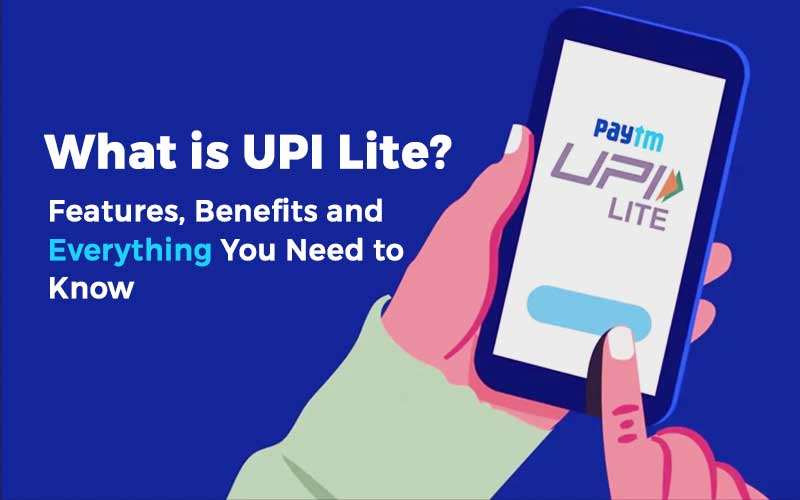Beware of fake UPI ID! Learn to identify scams, Spot scams, avoid fake UPI ID generators, and protect your hard-earned money with our informative guide.

In the rapidly evolving landscape of digital transactions, the Unified Payments Interface (UPI) has become a household name, revolutionizing the way we transfer money. However, with the convenience of UPI, there comes a lurking threat – fake UPI IDs. In this comprehensive guide, we will explore what fake UPI IDs are, how they are generated, ways to spot them, and the potential risks associated with these deceptive practices.
Also Read: What is UPI Lite? Features, Benefits and Everything You Need to Know
What is a Fake UPI ID?
A fake UPI ID is a non-existent identifier crafted to resemble a legitimate UPI handle. These fabricated IDs often mimic the format and structure of real ones, utilizing common names, numbers, and patterns to deceive unsuspecting users. Their sole purpose is to facilitate fraudulent activities like:
- Phishing: Embedded in fraudulent emails and messages, these IDs lure victims into sending money to non-existent accounts.
- Money Laundering: Criminals use a network of fake IDs to funnel illicit funds, making their origin and destination nearly impossible to trace.
- Scam Schemes: Fake IDs become the backbone of elaborate scams, masquerading as legitimate businesses or individuals to solicit payments for non-existent services.
- Identity Theft: In extreme cases, stolen personal information can be used to create fake IDs, potentially granting unauthorized access to actual bank accounts.
Also Read: How to Find Mobile Number Using UPI Id?
Fake UPI ID Generator:
To execute their deceptive plans, cybercriminals often resort to using fake UPI ID generators. These tools enable them to create seemingly authentic UPI IDs, making it challenging for users to differentiate between the genuine and the fake. The generator typically uses algorithms to generate random UPI IDs or mimics legitimate ones by manipulating details.
How to Spot a Fake UPI ID:
Spotting a fake UPI ID requires a keen eye and cautious approach. Here are some key indicators that can help you identify a potential fake:
- Unfamiliar bank names: Be wary of IDs associated with unfamiliar banks or banks you haven’t heard of.
- Suspicious VPAs: Look for unusual patterns or words in the VPA that might seem out of place or offensive.
- Unusual Characters or Symbols:
Legitimate UPI IDs are typically alphanumeric and do not contain special characters. Be wary of IDs that include symbols or characters uncommon in standard UPI IDs.
Let’s consider an example:
Fake ID: “moneytransfer_123”
Red flags:- Unfamiliar character: “_”
- Name: Generic and unrelated to a potential recipient
- Length: Exceeds the standard range
- Mismatched Names and IDs:
Check if the displayed name matches the UPI ID. Cybercriminals often use names that sound similar to trusted entities, but a careful examination might reveal discrepancies.
Example:- “freefundz@unknownbank”
- “my_lucky_number123@scammybank”
- “winbigtoday@nonexistentbank”
- Unsolicited Requests:
Be cautious of unsolicited money transfer requests. Scammers often send requests to random UPI IDs, hoping for unsuspecting victims to approve the transaction. - Unusual Transaction Amounts:
If the transaction amount seems unusually high or low, it could be a red flag. Scammers may use enticingly low amounts to lure victims into making transactions without much thought. - Check for Verified Accounts:
Many legitimate services and platforms have verified UPI IDs. Before making transactions, check for any verification marks that indicate the authenticity of the account. - Unrealistic offers:
If someone is offering you an unusually good deal or pressuring you to make a quick payment using a specific UPI ID, it’s likely a scam.
Fake UPI ID Generator Apps:
Unfortunately, generating a fake UPI ID is not a herculean task. Several online tools and scripts, readily accessible on the internet, exploit loopholes in validation checks. These tools manipulate existing formats, substituting numbers and names to create seemingly legitimate IDs. This accessibility fuels the proliferation of fake IDs and poses a serious challenge to the integrity of the system.
Risks Associated with Fake UPI IDs:
Falling victim to a fake UPI ID can have severe consequences:
- Financial Loss:
Users risk losing their money by inadvertently transferring funds to a fake UPI ID. Once the money is sent, it is challenging to recover, and the scammer may remain untraceable. - Identity Theft:
Cybercriminals may use the information gathered during fake UPI ID transactions for identity theft. This can lead to a range of fraudulent activities, including opening fake accounts and applying for loans in the victim’s name. - Compromised Personal Information:
Sharing UPI credentials with fake IDs can lead to the compromise of personal information, making users vulnerable to further cyber threats.
Also Read: How to Recover Money Transferred to a Wrong UPI Address?
Fake UPI ID Example:
To illustrate the concept of fake UPI IDs, let’s consider an example. Imagine receiving a payment request from an ID that closely resembles a popular online retailer’s legitimate UPI ID. The request might prompt you to click on a link to confirm the transaction. However, upon closer inspection, you notice subtle differences in the UPI ID, such as an extra character or a misspelled word. These nuances reveal the request as a potential scam, urging you to reject the transaction and report the fake ID.
To further illustrate the deceptive nature of fake UPI IDs, let’s explore a couple of examples:
Example 1:
- Legitimate UPI ID: john.doe@bankname
- Fake UPI ID: john.doe@bankn4me
In this example, the fake UPI ID closely resembles the legitimate one but contains subtle alterations. Users might easily overlook such differences without careful scrutiny.
Example 2:
- Legitimate UPI ID: businessname@upibank
- Fake UPI ID: businessname.upibank@gmail
The fake UPI ID incorporates a non-standard domain (gmail.com) and uses symbols like dots and underscores to mimic a legitimate ID. This can mislead users who don’t pay close attention.
Some more examples of fake UPI IDs:
Generic Name: “PayToMe1234” or “FastMoney@abc”
Uncommon Characters: “p@yment@xyz” or “upi_id@123”
Missing Information: “ABC@123” (no bank name or IFSC code)
Brand Mimicry: “HDFC@pay” or “SBI@transfer” (misleadingly similar to existing bank identifiers)
Consequences of Fake UPI IDs
The consequences of fake UPI IDs are far-reaching, impacting individuals, businesses, and the entire digital payments ecosystem:
Financial losses: Individuals fall victim to unauthorized transactions, losing their hard-earned savings to scammers.
Erosion of trust: The prevalence of scams erodes trust in digital payments, potentially hindering adoption and financial inclusion.
Business disruption: Businesses suffer chargebacks and reputational damage due to fraudulent transactions initiated using fake IDs.
Systemic instability: The proliferation of fake IDs undermines the stability and integrity of the UPI system, raising concerns about its vulnerability.
A Call for Action
Eradicating fake UPI IDs requires a multi-pronged approach involving various stakeholders:
Regulatory bodies: Strengthen regulations, tighten KYC norms, and implement stricter verification and authentication protocols.
Payment service providers (PSPs): Invest in advanced fraud detection systems, educate users, and collaborate with authorities to share information.
Banks and financial institutions: Implement stricter account creation procedures and transaction origination checks.
Technology companies: Develop secure platforms and solutions leveraging advanced technologies like blockchain.
Users: Practice basic digital hygiene, verify sender details, report suspicious activity, and avoid using fake UPI ID generators.
A Collective Responsibility
The fight against fake UPI IDs is a continuous battle that demands vigilance and collaboration. By implementing robust measures, fostering awareness, and empowering users with knowledge, we can build a safer and more secure digital payments ecosystem. Remember, protecting your financial well-being in the digital realm is your responsibility. Stay informed, stay vigilant, and play your part in safeguarding the integrity of the UPI system.
Conclusion:
The fight against fake UPI IDs is a continuous battle that demands vigilance and collaboration. By implementing robust measures, fostering awareness, and empowering users with knowledge, we can build a safer and more secure digital payments ecosystem. Remember, protecting your financial well-being in the digital realm is your responsibility. Stay informed, stay vigilant, and play your part in safeguarding the integrity of the UPI system.

Hi I am Harish. I am a blogger, writer. I am also a photographer. I love to share my thoughts and experiences through the words in my blog. Thank you.



